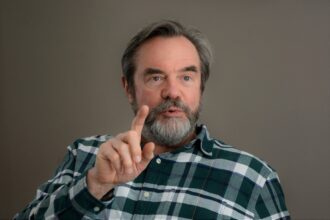I spent the bulk of the last week in Las Vegas attending the Consumer Electronics Show. If there were other academically-oriented physicians attending, I didn’t find them. Of course in the sea of 160,000 people, it’d be hard to pick out people you recognize, let alone find others with similar jobs/interests. It is easy to get distracted by the truly breathtaking displays of ultra-high-def TVs and audio equipment.
I spent the bulk of the last week in Las Vegas attending the Consumer Electronics Show. If there were other academically-oriented physicians attending, I didn’t find them. Of course in the sea of 160,000 people, it’d be hard to pick out people you recognize, let alone find others with similar jobs/interests. It is easy to get distracted by the truly breathtaking displays of ultra-high-def TVs and audio equipment. There seems to be an enormous gulf between academic medicine and consumerism, but it turns out that there are several good reasons to be there and I hope more HIT-oriented care providers will go next year. Let me outline a few of those reasons:
1. The sea of consumer health tracking devices continues to grow in size and capability.
Yet, healthcare providers, particularly physicians, tend to be oblivious to health tracking devices. We, as providers, have an unsettling arrogance when it comes to data from outside of the traditional care setting. We are comfortable asking patients subjective questions (it’s called taking a history), knowing that most of the time their recollection is flawed. But if someone brings in a spreadsheet of home-derived blood pressure readings, it is often dismissed as ‘inaccurate.’ We spend, on average, a couple of hours per year with patients (0.02% of their time) and still feel it’s ok to block out data from the other 99.98%.
But the number of personal health devices is growing, as is their capability. There are innumerable activity trackers. Several companies announced new versions and as one person at CES remarked, “The wrist is the new battleground.”
Likewise, there are several choices of wireless weight scales that our patients can use to help them monitor weight loss or fluid balance. The one newbie that stuck out for me was the HAPIfork from HAPILABS. I’m always interested in learning about devices/tools to help with the calorie-intake part of weight control (the calorie output half is disproportionately rich with devices and strategies). The HAPIfork helps train an eater to chew food slowly and take time between bites. It seems your sensation of satiety is significantly delayed after you’ve actually filled your stomach. The HAPIfork vibrates to remind you that you are eating too fast so you’ll slow down and theoretically won’t consume as much before you feel full. I’m going to date myself here, but it reminded me of the ‘60s TV series Gomer Pyle. Jim Nabors, who played Gomer, commented, “Grandma Pyle always reminded me to chew every bite 20 times,” with his thick southern drawl.
2. In an effort to help bridge the gap between mainstream medicine and consumerism, we launched Wellocracy (see also Wellocracy is coming).
Our idea is to bring connected health into the living room of regular folks using plain-spoken, easy-to-digest self-help ebooks and a community-building website. I had the pleasure of speaking about this at the Silvers Summit (I also spoke about the work we’re doing at CCH at the Digital Health Summit).
The first ebook is published and brings three straight-forward concepts to bear.
A) Feedback loops are powerful tools for building awareness and early engagement. If you have not tried activity tracking, I urge you to do so. We have information about cutting through the clutter of activity trackers on our site. You’ll (probably) learn that you tend to overestimate your activity and just how much you’ve engineered your life to minimize activity.
B) After a fashion, the novelty of any tracker will fade and you need to “find your stickiness factor” to stay engaged. We are all motivated differently. One of our goals at Wellocracy is to help each of you gain insight into how you’re motivated so you can match various motivational strategies with your tracking technology. The good news is that all of the trackers on the market are wirelessly connected, so you can easily share your data in the right context to hold yourself accountable and motivate you to stick with your program.
C) You don’t need to turn your life upside down to get more active. Park the car farther away from the gym. Take the steps rather than the escalator. Walk around your office while on conference calls. Do some housework and give the maid a day off. Rake your leaves. All of these everyday activities are like ‘found time’ in that you can burn calories without rearranging your life to spend hours at the gym.
3. Lastly, I’m convinced that to really solve healthcare’s problems we need to look beyond traditional healthcare. There are simply too many entrenched interests (providers and payers alike) to see real innovation from within. As someone else said, “every dollar of healthcare savings is a dollar less of income for someone in the system.” So I’m betting on consumers to take it over. Between crowdsourcing, online sharing and other Internet innovations, we’ve got to see some innovations that will come from outside of traditional healthcare and do a better job than we do.
I saw one possible example at CES called Healthspot. They represent themselves as the next generation of retail clinics, featuring a portable kiosk model – one you might seen in a mall near you one day. They enable providers to videoconference in to the kiosk and inside there are all of the tools needed to conduct a medical evaluation.
Whether its Healthspot or HAPIfork or some other innovation, I am bullish on consumer-led health reform. I can’t think of a better place to get a glimpse of how this new world is unfolding than at CES. I hope to see you there next year!
![]()







